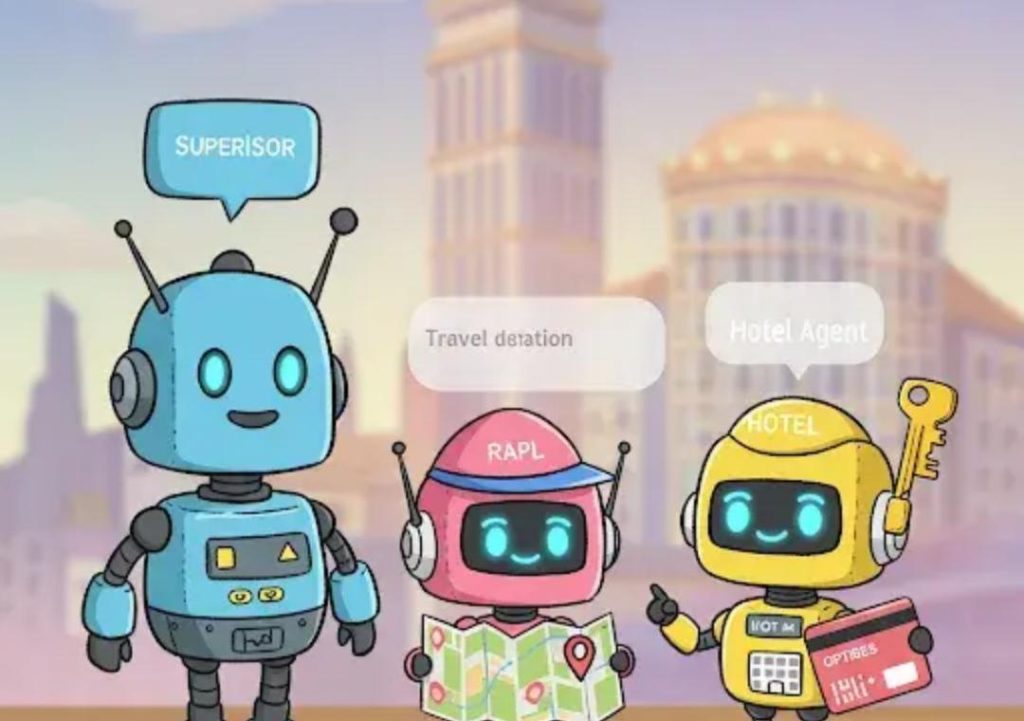
Multi-agent collaboration mimics real team dynamics
In the age of artificial intelligence, it’s easy to get caught up in the idea that one AI agent can do it all. But, just like in human teams, relying on a single AI agent can lead to inefficiencies and limitations. What if you could deploy a full team of AI agents, each specializing in different tasks, communicating with each other, and collaborating seamlessly? This is the concept of multi-agent systems, and it’s revolutionizing the way we approach AI.
The Limitations of Single-Agent Systems
Single-agent systems, where a single AI agent is responsible for a specific task or set of tasks, have their limitations. For instance, a single agent may not have the necessary domain-specific knowledge to tackle a complex problem, or it may not be able to adapt to changing circumstances. Furthermore, single-agent systems can be prone to errors and biases, which can have significant consequences in applications like healthcare, finance, and autonomous vehicles.
The Power of Multi-Agent Systems
Multi-agent systems, on the other hand, offer a more robust and flexible approach. By deploying multiple agents, each with its own strengths and weaknesses, you can create a system that can tackle complex problems from multiple angles. Each agent can specialize in a specific task or domain, allowing the system to adapt to changing circumstances and learn from its mistakes.
Modular Setup for Digital Workflows
The modular setup of multi-agent systems is particularly useful for creating digital workflows that mimic human teamwork. In a multi-agent system, each agent can be designed to perform a specific task, such as research, validation, or reporting. These agents can communicate with each other in real-time, sharing information and insights to achieve a common goal.
For example, in a research project, one agent might be responsible for gathering data, another for analyzing the data, and a third for interpreting the results. Each agent can work independently, but also communicate with each other to ensure that the results are accurate and complete.
Communication and Collaboration
Communication and collaboration are critical components of multi-agent systems. Agents must be able to communicate with each other seamlessly, sharing information and insights to achieve a common goal. This can be achieved through a variety of means, such as message passing, shared memory, or even natural language processing.
In addition to communication, agents must also be able to collaborate effectively. This can involve coordinating their actions, sharing resources, and working together to achieve a common goal. For instance, in a manufacturing system, one agent might be responsible for monitoring production levels, while another agent is responsible for adjusting production schedules.
Scalability and Flexibility
One of the biggest advantages of multi-agent systems is their scalability and flexibility. By deploying multiple agents, you can easily scale up or down to meet changing demands. For instance, in a customer service system, you could deploy multiple agents to handle a high volume of customer inquiries, and then scale back down to a single agent during slower periods.
Multi-agent systems are also highly flexible, allowing you to easily modify or replace agents as needed. For instance, if one agent becomes redundant or outdated, you can simply replace it with a new agent without disrupting the overall system.
Real-World Applications
Multi-agent systems have a wide range of real-world applications across industries such as:
- Healthcare: Multi-agent systems can be used to analyze medical images, diagnose diseases, and develop personalized treatment plans.
- Finance: Agents can be used to analyze financial data, identify trends, and make investment decisions.
- Manufacturing: Agents can be used to monitor production levels, adjust schedules, and optimize supply chains.
- Autonomous Vehicles: Agents can be used to analyze sensor data, make decisions, and control the vehicle’s movements.
Conclusion
In conclusion, multi-agent collaboration mimics real team dynamics, offering a more robust and flexible approach to AI development. By deploying multiple agents, each with its own strengths and weaknesses, you can create a system that can tackle complex problems from multiple angles. Whether it’s research, validation, or reporting, multi-agent systems offer a modular setup for digital workflows that mirror human teamwork, but at machine speed and scale.
Learn more about building AI agents
To learn more about building AI agents and exploring the world of multi-agent systems, check out our latest blog post on https://www.growthjockey.com/blogs/build-ai-agents.
Source:



